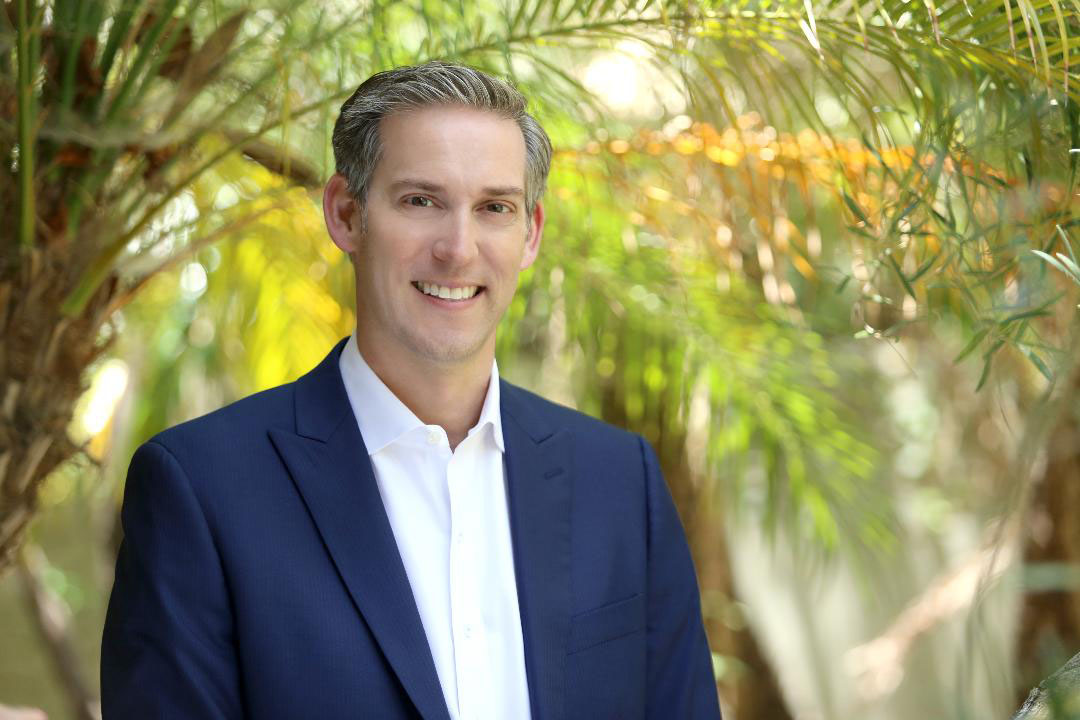 Thomas Keneally (Brendon Thorne/Getty Images)
Thomas Keneally (Brendon Thorne/Getty Images) On October 18th, the book that led to arguably the most acclaimed non-documentary Holocaust film of all time, “Schindler’s List,” turned 40.
Before there was a film, there was a book, originally titled “Schindler’s Ark.” And before there was the book, there was a chance encounter between author Thomas Keneally with Leopold “Poldek” Pfefferberg (otherwise known as Leopold Page) at Pfefferberg’s Beverly Hills luggage bag shop.
“I was saved, and my wife was saved, by a Nazi. I was a Jew imprisoned with Jews,” Pfefferberg told Keneally that day in 1980. “So a Nazi saves me and, more important, saves Misia, my young wife. So although he’s a Nazi, to me he’s Jesus Christ. Not that he was a saint. He was all-drinking, all-black-marketeering, all-screwing, okay? But he got Misia out of Auschwitz, so to me he is G-d.”
And now, 40 years since the story of Oskar Schindler hit bookshelves, Keneally spoke with the Journal from his home in Sydney, Australia to reflect on the impact of the book over the past four decades.
Several times in our conversation, he says a variant of, “that’s my excuse for being a dumb Irish Australian,” and “I didn’t know what I was doing, I was a dumb goy stumbling into Poldek’s store in Beverly Hills.”
He was 45 at the time he met Pfefferberg, and even at 87, he can only humbly accept his own place as the messenger of horror and history. Several times in our conversation, he says a variant of, “that’s my excuse for being a dumb Irish Australian,” and “I didn’t know what I was doing, I was a dumb goy stumbling into Poldek’s store in Beverly Hills.” But Keneally is keenly aware of the impact he had by taking up the story of how Oskar Schindler saved 1,200 Jews.
“The most wonderful thing that is beyond my merits as a writer, I just happened to be a dumb gentile, a former student of the priesthood who had met Poldek and read prisoners’ reactions to Schindler,” Keneally told the Journal. “And I thought this is wonderful, this shows that the virtuous man is not always the man who will [deliver] you — the spirit of beneficence can breathe in unlikely situations. And that is an enduring enlightenment. And also that sense of real people whom I got to know very well and who were no different fellow homo sapiens, the mystery of why they were pursued.”
In 2007, Keneally published the book “Searching for Schindler” about the process of learning, researching and writing “Schindler’s Ark,” and of course its adaptation into the Academy Award-winning film “Schindler’s List.”
Keneally still recalls in detail the encounters he had with Schindler Jews and their descendants during the two years he spent writing the book, and in the 40 years since it was released. He speaks of Ryszard Horowitz, possibly the youngest Auschwitz survivor. He also shares stories about Leosia Korn (known as “Lucy’s Story” in “Schindler’s List”) who moved to Australia following World War II.
In “Searching for Schindler,” Keneally wrote, “The Korns’ immigration story was a little like Leopold and Misia’s. When they arrived in Sydney postwar, they had been amazed to discover that the chief sectarian fight was not between Gentile and Jew but, at that stage, between Catholic and Protestant. ‘I said to a friend,’ Leosia told me, ‘here the Catholics are the Jews!’ Australians, who with unabashed xenophobia labeled all foreigners w—s, did not discriminate between Polish Catholics and Polish Jews, and abused them both with equal ferocity. Equality at last, thought the Korns.’”
But in writing “Schindler’s Ark,” Keneally could see how the moral ambiguity and puzzlement that the story of Schindler, an ammunition supplier for the Nazis, could bring people. As he dug more into the story, he wondered, what motivated Schindler? He was a womanizer, a drunk, and shifty businessman who wanted to be rich.
Keneally said that Schindler “wanted to be rich, but he didn’t want to be rich and stand on a heap of corpses and be rich.”
Keneally said that Schindler “wanted to be rich, but he didn’t want to be rich and stand on a heap of corpses and be rich.”
The story is more complicated and nuanced than that, as can be ascertained by reading Keneally’s books or watching Steven Spielberg’s film. And that is something that Keneally wants readers to remember about the story — that the details are delicate and deep.
“No one forgets the story [in the film “Schindler’s List”] of the little girl in red or the little boy who threw himself in the latrine — both are true and both are terrible and daring,” Keneally said. “However, it makes you realize what those millions went through. So that is the genius, the implicit genius, in the Schindler story that I didn’t make up, that I inherited, that I could have only messed up because there’s always a danger, no matter how good the story, a narrator — either film or text — will mess it up.”
The weight of the story was a lot for Keneally to carry before writing “Schindler’s Ark.”
“I was just a novelist from the Antipodes fascinated by a story, and my early claim was I couldn’t write it,” Keneally said. “Why? Because I didn’t know many Jews.”
His father served in the Royal Australian Air Force in World War II in North Africa and the Middle East where he told stories of cordial interactions with Jews. Following the War, Jews in Australia settled in two areas, neither of which were where Keneally lived. He was still fascinated by the history of Judaism and the various sects from antiquity. Keneally enjoyed books by Mordecai Richler, and his favorite writer was Saul Bellow. He still smiles at the mention of his adoration of Mel Brooks and Billy Crystal.
Regardless, Keneally still buckled down and wrote his most famous and important work, “Schindler’s Ark,” while splitting his time between a Sydney library and a room of a house overlooking Bilgola Beach.
The book’s title was changed by Simon & Schuster to “Schindler’s List,” after fears that “Ark” could be offensive, with imagery of Noah and animals being led two-by-two. But Keneally said that “Ark” had a different meaning, that “there was an Ark, a rough Covenant between Oskar, the black-marketer, and his Jews,” Keneally said.
In our conversation, Keneally offered many stories of the long-term impact of the book. One was how it helped open conversations between generations of Holocaust survivors and their descendants.
“So many Jewish, youngish — about your generation, or maybe in their 50s — come up and say in America and all over the world, ‘My father or mother didn’t speak about the camps until the Schindler phenomenon,’” Keneally said. “And insofar as I’m responsible for a small bit of that, I had no idea that this would be the result of my work. And this is incredibly gratifying that they were able to make peace with their children about what they went through, which they thought would either burden their children or give them a negative concept of the human race.”























 More news and opinions than at a Shabbat dinner, right in your inbox.
More news and opinions than at a Shabbat dinner, right in your inbox.